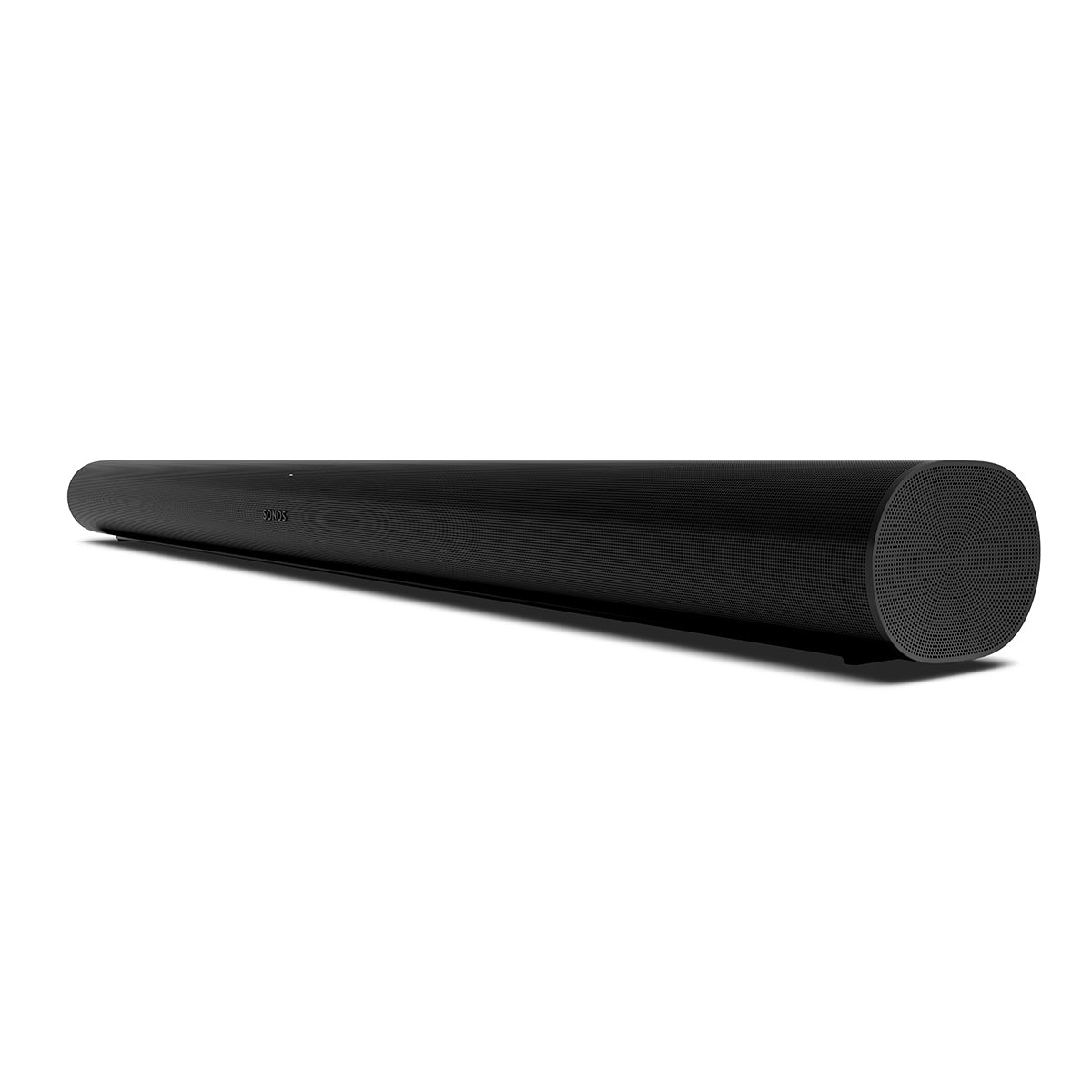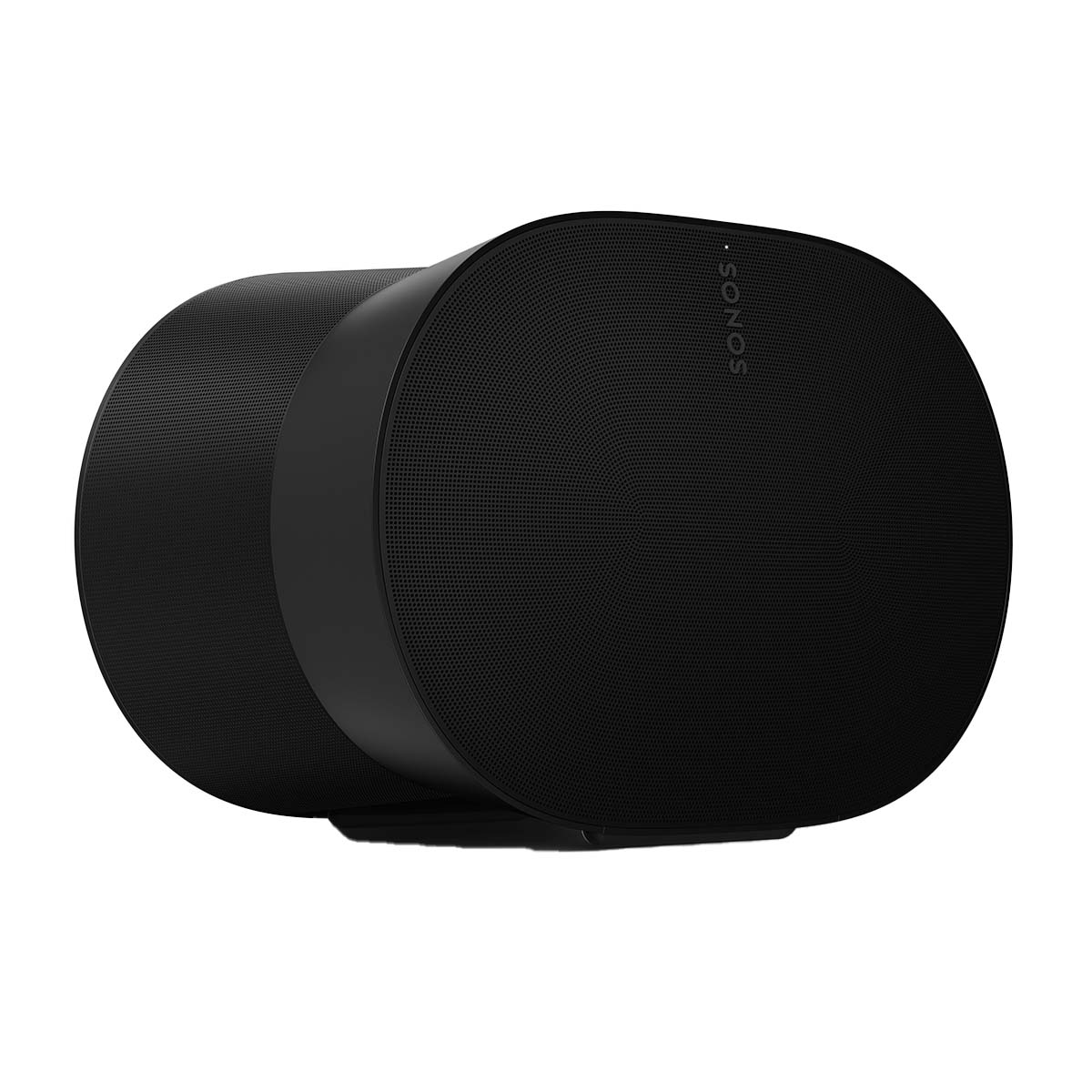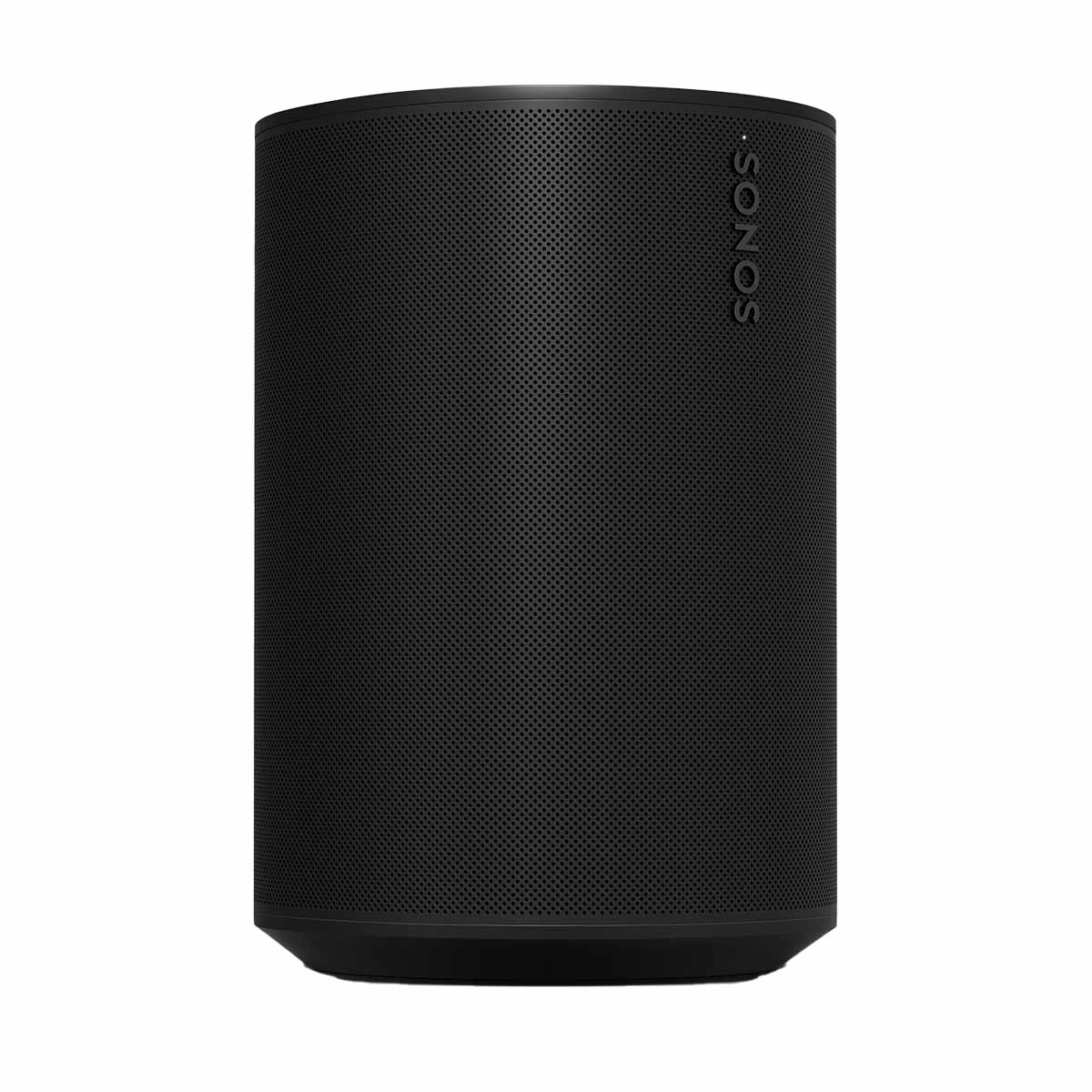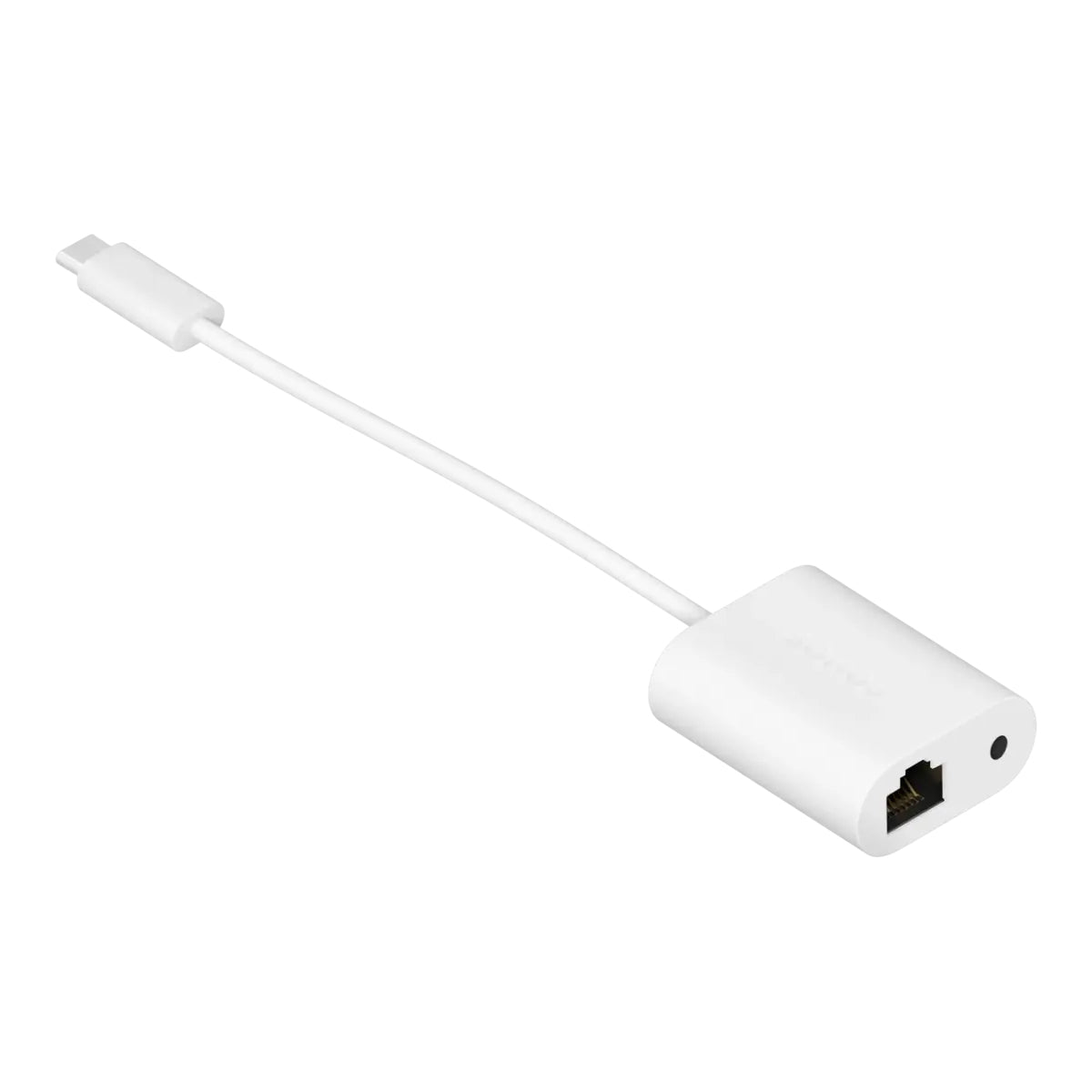
Sonos recently announced two new speakers, the Sonos Era 100 and Sonos Era 300, and Audio Advice had the privilege of testing them out first. In this article, we will take a closer look at the features and technologies offered by these speakers, the key differences between the Sonos One and the new Era 100, and our expert assessment of the sound quality and performance across various home theater setups. Read on to discover our detailed review of these impressive new Sonos speakers.
One of the most notable changes in the Sonos Era 100 and Era 300 speakers is the inclusion of Bluetooth 5.0 connectivity. Sonos has been reluctant to adopt this feature in the past, as WiFi offers superior audio quality and eliminates the risk of interruptions from notifications or calls. At Audio Advice, we still recommend using WiFi for the best audio experience, and it's worth noting that Sonos has also upgraded to WiFi 6 for more reliable streaming. These small improvements help to future-proof these speakers. However, the addition of Bluetooth offers undeniable convenience, especially for gatherings or parties. With the ability to effortlessly pair any phone without downloading an app or sharing a WiFi password, these speakers make it easy for anyone to play their favorite tunes. Or both of these also support Apple Airplay if you prefer that method of streaming.
Sonos has listened to its fans and added a much-requested feature to the Era 100 and Era 300 speakers: line input. The speakers now have USB-C line inputs located on the back of the units, which allows you to plug in an auxiliary cable or Ethernet cable (with the appropriate adapters, which are not included in the box).
By using an RCA-to-aux cable adapter and then plugging it into the aux-to-USB-C adapter, you can now play your favorite records through the Sonos Era 100 or 300. This feature is especially useful for those who have the Era 100 or Era 300 set up as a stereo pair, as the line input will work with just one of the speakers. At Audio Advice, we're thrilled with this upgrade and can't wait to see how it will enhance our customers' listening experiences.
Sonos has taken their room calibration game to the next level with TruPlay tuning, available on their new Era 100 & Era 300 speakers for iOS users. For the best sound experience, we highly recommend using this feature after setting up your speakers. But, hold on to your hats, folks, because Sonos has just introduced Quick Tuning - a fast and easy tuning system perfect for smaller rooms or spaces where moving around isn't the easiest. And, the great news is that this new feature is now available for Android users too, which has been a highly requested addition.
TruPlay tuning requires you to stand up and walk around the speaker as it calibrates the sound. However, Quick tuning uses the speaker's mic to detect the environment, eliminating the need to move around during the tuning process. While Quick Tuning is a step forward for Android users, we still believe that TruPlay tuning is the superior method for achieving the best sound quality. We hope to see Android users have access to the full TruPlay tuning process soon.
The top of the units retain capacitive touch play/pause, next, and previous buttons, but Sonos has eliminated the sliding volume control found on the Sonos One in favor of a volume trough that features haptic feedback when adjusting the volume. This small but practical change makes it effortless to control the volume without accidentally altering other settings. Moreover, the microphone holes are now just four pinholes, offering a unique look.
There is a small speech bubble with an LED light, indicating whether voice services are active or disabled. On the back, a physical switch above the USB-C port can turn on or off voice services. You can use Sonos Voice Control to manage your entire Sonos system with hands-free ease and privacy. Also, Amazon Alexa with the Sonos skill to control Sonos with Alexa. Google Assistant is not yet available, but it may be added in the future. If you wish to use Siri for voice control, you must have the Apple Home app, add your speaker to the app, and use your iPhone, iPad, or Apple TV to play music, which is currently restricted to Apple Music only.
The Era 300 is designed with sustainability in mind, utilizing post-consumer recycled (PCR) plastic and packaged in 100% sustainably sourced paper. Its power consumption is optimized, drawing less than two watts of power when idle, and featuring a new sleep function. Additionally, it is built for easy serviceability, reducing the use of adhesives and transitioning to screws for effortless disassembly and repair.




It is important to note that you can add two Sonos Subs (not sub minis) to any of these home theater setups, and it will stay at 7.1.4 because the subs will play the same sound and are not discrete. In addition, to pair more than one Sub, at least one of them needs to be a Sub Gen 3.
If you’re wondering what will be the best setup for you and your room, we are here to help! Reach out to us at 888.899.8776 or chat with us, and an Audio Advice expert will be happy to help!

Let's dive into the Sonos Era 100, the latest iteration of the Sonos One (Gen2) speaker, which has undergone a dramatic transformation since the Sonos Play:1 was released ten years ago. Sonos claims that they conducted thorough research and gathered feedback from customers to develop the next "era" of Sonos speakers, and they've brought those insights to life with the Era 100. As soon as we heard that Sonos was listening to their customers, we were eager to test these new speakers and discover their potential.
The Era 100 is packed with exciting new features that take Sonos speakers to the next level. One of the standout upgrades is the addition of two angled tweeters and custom waveguides that disperse sound waves for a wider soundstage. This enhanced design allows the Era 100 to deliver a more immersive, detailed stereo sound compared to the Sonos One's mono playback that only has a single tweeter.
But that's not all – the midwoofer has been upgraded with a 25% larger size and an oval shape that enables faithful playback of mid-range vocal frequencies and deep bass notes. This translates to a richer and more dynamic sound experience for listeners.
The Era 100 is also powered by three class D amps that have been meticulously tuned to its unique acoustic architecture. Additionally, the speaker features a 47% faster processor and new co-neural processor, which means faster voice assistant features and improved energy efficiency.
The Era 100 by Sonos has undergone a major redesign, featuring a sleek, modern appearance that sets it apart from previous generations. Its slim profile and slightly taller build make it stand out, while the grill is almost completely wrapped around the body, leaving only minimal bezels at the top and bottom. The grill holes have also been changed from elongated circles to pinholes, adding a distinctive touch to the design. Additionally, the Era 100 boasts a round oval shape instead of a square one when viewed from above.
The Era 100 also features a rubber surface on the bottom for stability and a mounting hole, which the previous generation lacked. This allows for easy mounting of Sonos wall mounts in an upside-down or bottom position. Furthermore, Sonos has introduced custom floor stands that can be purchased separately.
The Era 100 is designed to offer exceptional stereo sound from a single speaker, but pairing two together can truly enhance the listening experience. During our tests, we were blown away by the clarity, depth, and effortless bass produced by just one Era 100. This is largely thanks to the two angled tweeters and custom waveguides that create a wider soundstage. Compared to the Sonos One Gen2, the Era 100 was much more powerful and deeper sounding, thanks to the extra tweeters and larger midrange woofer. When paired together to make a stereo pair, the Era 100’s again had a more effortless sound with a wider soundstage and separation of instruments was a bit more prevalent.
Adding a subwoofer to the mix took the sound to a whole new level, filling in those low-end frequencies and leaving the midrange with an effortless and lively tone. We also tested the Era 100’s as rear speakers in a home theater setup with a Sonos Arc, and while they performed well, we didn't see as significant of an upgrade if you currently have the Sonos One Gen2 as your rear speakers. If you’re looking to upgrade a stereo pair of Sonos One Gen2’s these will definitely sound better, but the improvements won’t be as impressive as the speakers we discuss next, the Era 300’s.
Once you put them in a home theater setup, you lose the functionality of the new touch controls, you most likely won’t be using the line in feature or bluetooth, so you really only gain that slightly better sound which most likely isn’t worth it. But if you want to upgrade your current pair of Sonos One Gen2 speakers that you use in your family room or kitchen, these new features will definitely come in handy so that is a situation where we see it being worth it.

Brand new to the entire Sonos lineup is their first Dolby Atmos-enabled speaker with dedicated up-firing drivers, the Era 300. Unlike any speaker they’ve designed before, this one stands out from the rest of the Sonos family with its unique “hourglass” shape.
Learn more about Dolby Atmos & Spatial Audio
The Era 300 is equipped with six class-D amplifiers that deliver impeccable power to its four tweeters. Positioned strategically, the forward-firing mid tweeter takes the lead in providing a seamless center image, while the pair of side-firing tweeters works harmoniously to create an expansive stereo separation, evenly spreading the sound across the room. The up-firing tweeter is uniquely placed in a directional horn to project the sound upward, bouncing it off the ceiling to reproduce realistic Dolby Atmos content with precision. To optimize stereo playback and minimize distortion, two woofers are thoughtfully spaced around the sides, producing a consistently smooth and satisfying bass.
Another interesting feature that Sonos has implemented with the Era 300 is the far-field microphone array that uses advanced beamforming and multichannel echo cancellation for quick and accurate voice control and Trueplay tuning.
Obviously, this design stands out in the world of speakers. Whether you like the aesthetic of it or not, Sonos has designed stunningly intricate acoustic architecture that is elegantly encased in an hourglass design that accentuates every angle, proportion, and perforation to optimize the direction and dispersion of sound, enveloping you in a truly immersive audio experience.
What's truly exciting about Sonos' debut of their first-ever spatial audio speaker is the unwavering conviction of their CEO, Patrick Spence, who views it as the future of music production. This confidence is reflected in Sonos' initiative to provide Era 300 speakers to production studios worldwide, enabling them to accurately experience how their spatial audio music will sound in a customer's home. It's evident that the spatial audio revolution has gained significant momentum, and we anticipate its continued growth and expansion.
These speakers will work on a bookshelf, a TV credenza, or on their custom floorstands or wall mounts.
Listening to spatial audio music tracks on the Era 300 is surprisingly fun. While it’s not the same as a full dolby atmos home theater with 6 dedicated in-ceiling speakers, which we totally were not expecting it to be, it definitely filled the room with a way more immersive experience than any of the stereo soundtracks. Now currently, to do this testing, we used Amazon Music HD. This is the only music service that supports Spatial Audio on the Era 300 but Sonos reports that Apple Music should be coming soon.
It’s a very clear difference when you switch on and off the Dolby Atmos feature in Amazon Music. With Dolby Atmos turned on, the up-firing driver really filled the room with a more 3D soundstage no matter where you were standing. With Dolby Atmos turned off, sitting directly in front of the speaker was the best spot to enjoy the stereo soundstage. So, we actually see the spatial audio feature being really neat for immersion but also for filling your room with more sound if you are having a party where people are constantly moving around. When we paired two of them together, it was about 10X more immersive. This allowed us to use them as a stereo pair with forward-facing tweeters, and the second up-firing driver seemed to fill the gaps in the height channels with a more effortless, punchy sound. Add a sub, and this is a really fun music setup that we guarantee you’ll get lost in your favorite atmos track.
We immediately wanted to test this in a home theater setup, but we were disappointed to see that pairing two Era 300’s together is not an option. We think this would be a really cool setup instead of a soundbar, but for now, you’re going to need an Atmos-enabled Sonos soundbar, such as the Beam (Gen 2) or the Arc, to utilize the Era 300s. We opted for the Sonos Arc and placed two Era 300’s as the rears on each side. Now, this is a mind-bending setup for Sonos, and we have never before been able to experience anything like this from them. Using the Sonos One or the new Sonos Era 100’s as rears will not add any additional atmos channels. However, adding two Era 300’s to the Arc, will bring your channel count from 7.0.2 to 7.0.4! Add in a subwoofer or two and it will make it a 7.1.4 home theater setup! (7.1.4 is max channel setup even with two subs because they are not discrete channels) Now that is a setup that will blow your mind.
We immediately tested some of our favorite Dolby Atmos movie scenes and WOW!, this setup rocks. We will go as far as to say that it may be the best soundbar with wireless rears setup that we have ever tested. The height effects are brilliantly recreated, and the overall surround sound is realistic and immersive. Nothing sounded small or harsh, and adding the extra atmos channels in the back of the room made the car zooms in 6Underground fly across the ceiling and feel like you almost needed to duck to get out of the way. In A Quiet Place, when the monster creeps downstairs, it’s like you can point to where it is in the room above you with pinpoint accuracy. Super well done!
Many are going to ask whether they should just get the larger Sonos Five instead of the Era 300. We think there are very specific use cases for each of these speakers, and it will depend on what your primary use is. If you prefer stereo listening and want to pair two together to listen to your vinyl or any traditional soundtrack, go for a pair of the Sonos Fives. They have more bass in them, with a very clean and smooth sound that we think beats two Era 300’s in a stereo setup.
If you want just one of them, we think the Era 300 is the way to go to start experimenting with spatial audio tracks. Yes, the Five will sound better side by side, but in our testing, it was minimal, and the spatial audio option, along with Bluetooth and the other new features, beat out the Five, in our opinion. If you don’t care about atmos and just want the best sound, then just stick to the Five.
For rears, if you have the Sonos One Gen 2’s already and are looking for an upgrade, we recommend going with the Era 300’s instead of the 100’s as they probably won’t be as big of a step up for the price. However, the 300’s are noticeably more powerful and add two extra height channels to make it worth the extra money. In fact, if it’s in your budget, we really have to say that the Era 300’s perform perfectly as rears with their up-firing drivers. What’s even cooler is that you could technically mount them with wall mounts upside down, up high on the wall and have the up-firing speaker fire down at you and have the speakers totally out of the way, super cool feature!
Our ultimate home theater setup would be the Sonos Arc, two Era 300’s as rears, and two Sub Gen 3’s for that 7.1.4 setup. It is not cheap, but the sound quality is up to par and you’ll have the ease of mind knowing that Sonos has crafted high quality products that they have built to last and will continue to be supported.

Sonos Arc Dolby Atmos Soundbar
$599.00

Sonos Era 300 Smart Speaker
$379.00

Sonos Sub Wireless Subwoofer - Gen. 3
$599.00
We hope this overview and review of the new Sonos Era 100 and Sonos Era 300 has helped you understand what these two speakers can do and if they are right for you. If you’re still struggling to decide which ones are best for you and your home, reach out to our team of experts at 888.899.8776 or chat with us, and an Audio Advice expert will be happy to help!
You'll be among the first to know about product launches, exclusive online deals, and the hottest audio trends.



